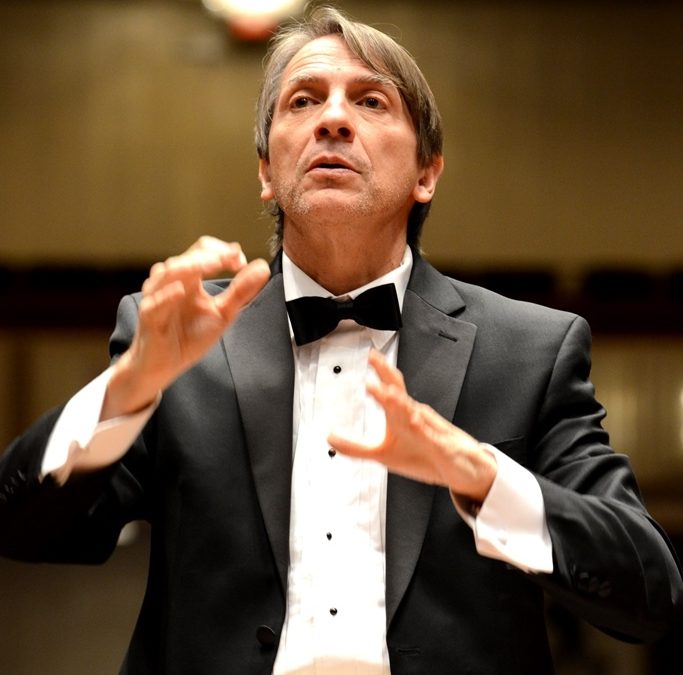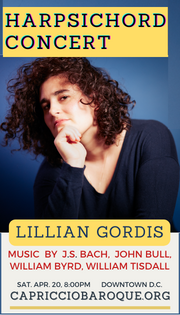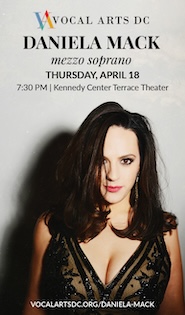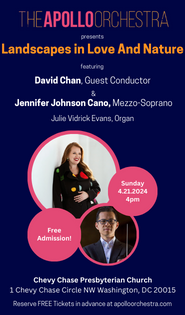Choral Arts Society goes big with Monteverdi “Vespers”

Scott Tucker conducted the Choral Arts Society of Washington in Monteverdi’s “Vespers” Saturday afternoon at the Kennedy Center.
Claudio Monteverdi did not write his Vespro della Beata Vergine for a choir of almost two hundred. The musical forces arrayed for even the grandest major feast in Baroque Italy failed to approach that size.
Nevertheless, conductor Scott Tucker led just such a grandly scaled performance of the work Saturday afternoon with the Choral Arts Society of Washington, which last programmed this work in 1974. As lighting approximated the fall of dusk in the Kennedy Center Concert Hall, the massed musicians made a good case for their interpretation.
From the choral part of the opening versicle, “Deus in adjutorium,” the large wall of singers at the back of the stage produced a thrilling sound. Tucker had some trouble getting them to turn on a dime rhythmically, as Monteverdi requires, but the boom of full-bodied textures enhanced the dramatic moments in the score. This made sudden contrasts between the two choirs used by Monteverdi particularly exciting, as when the large group burst onto the scene at the words “suscitans” and “erigens” in the “Laudate pueri Dominum.”
There were inevitable drawbacks. With such a large group Tucker had to create preset rhythms for them to sing in the choral psalmody, where ideally the rhythm should be freer. The intonation, particularly in the women’s parts, sagged at crucial points, perhaps because of the distance from the relatively small instrumental group. Even so, with the chance to drill the large choral sections over many rehearsals, Tucker was able to take some of the pieces, like “Lauda Jerusalem,” at exhilarating tempos so that the interplay of the counterpoint crackled with energy.
Choral Arts partnered in this concert with The Thirteen, a chamber choir founded here in 2012. This ensemble of twelve voices provided the opposition of a smaller ensemble of “favoriti,” an important part of the concerto principle at work in Monteverdi’s score, as in the “Dixit Dominus” psalm. As a group, prepared by conductor Matthew Robertson, they had their most beautifully blended and poignant moment at the end of “Audi Coelum,” on the concluding lines of the Marian text, “Benedicta es, virgo Maria.”
Singers from The Thirteen also served as soloists in the virtuoso pieces Monteverdi placed between the choral psalms. Soprano Molly Netter was the most striking of them, with heft at the bottom of her voice and a floating top. In “Nigra sum,” accompanied demurely by organist Kenneth Slowik and theorbist Anthony Harvey, she used the expressive text and judicious embellishments of the relatively simple melodic line to stirring effect. Netter also melded seamlessly with the smaller voice of Madeline Apple Healey in “Pulchra es.”
Three tenor soloists shone brightest in “Duo Seraphim,” although with the first two singers placed in the balconies to either side of the stage, ensemble sometimes suffered. At the crucial moment of this piece, “et hi tres unum sunt” (and these three are one), Monteverdi symbolically wrote a chord for the three men that becomes a single note. Tucker gave this little scene plenty of room rhythmically, and Andrew Fuchs, Jonas Budris, and Nathan Hodgson sang the triad melting into unison with perfect intonation. In the other tenor showpiece, “Audi coelum,” Budris was placed offstage but not far enough away to sound like a disembodied echo to Jacob Perry’s more nasal but ringing voice.
The instrumental ensemble, a combination of historical and modern instruments, was large enough to accompany the full chorus but could also be scaled down to accompany the smaller choir or soloists. The two lead violinists and three cornetto players were solid on the virtuosic solos of the final three pieces. There was some confusion in the vocal parts on the “Sonata sopra Sancta Maria,” a litany in which each statement of the tune is in a different meter and style.
One of the best advantages of the large chorus was the prominence it gave to the simple Gregorian psalm tones, which are the spine of this piece. Tucker instructed his choir not to overwhelm the texture with too much sound, but the sheer number of voices meant that these tunes could be sustained infinitely, floating with endless breath support. In particular, in the closing doxology of the “Magnificat,” the women’s sound on the canticle tone was like an organ pipe, clear and unwavering, while the male soloists danced around it on their more complex parts.
Choral Arts Society of Washington returns to the Kennedy Center December 16, 17, 18, and 24 with its annual concerts of Christmas music. choralarts.org








Posted Nov 19, 2017 at 1:43 pm by Fuzzy Dunlop
I disagree that the orchestra “was large enough to accompany the full chorus”. From my seat in the first tier of the Concert Hall, the orchestra was drowned out by the chorus whenever the two played together.
Posted Nov 20, 2017 at 8:44 am by Laura Youens
I’m so sorry I missed this! I love anything by Monteverdi.
Posted Nov 20, 2017 at 12:34 pm by Robert Shafer
It was a pleasure to read Mr. Downey’s review this morning. Rarely does a music critic know this piece so well, and his writing was astute and intelligent in every way. I thought that Mr. Tucker and his forces did an excellent job in this formidable masterpiece. I know the piece fairly well, having conducted it five times over the past forty years here in Washington. Truly, one does not become a choral conductor until he or she has made this arduous rite of passage! Congratulations to one and all. Robert Shafer